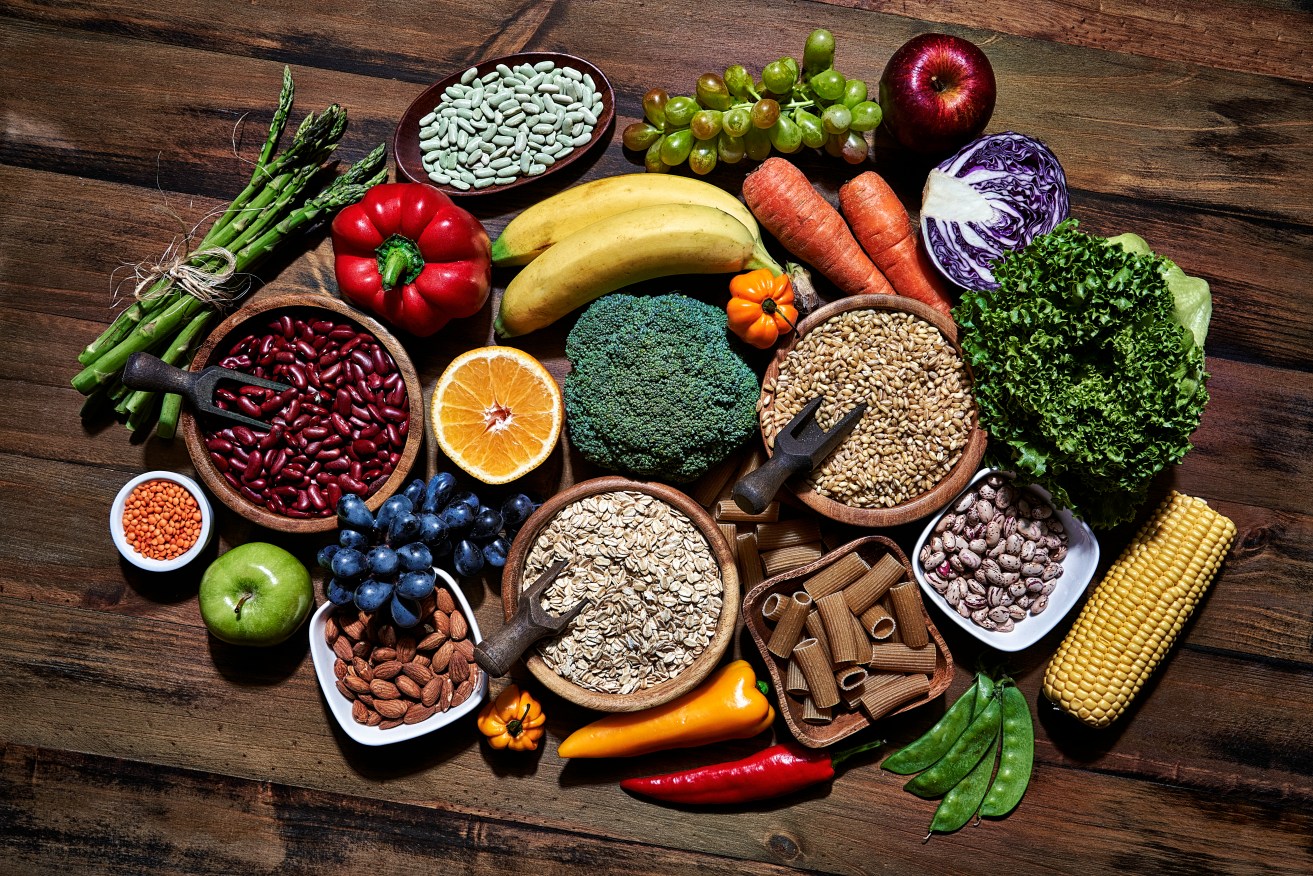The tasty carbs: How to hold off weight gain in middle life


It's not so much about how many carbs you're eating, but what type. Photo: Getty
Do you ever wonder where that pudding came from? It just seems to move in one day, and over time expands into something that obscures the view of your feet.
How the heck did it get there?
In a new study, scientists essentially watched it happen to 136,432 men and women, aged 65 and younger. (The average age was 51.)
Over 24 to 28 years, what the participants ate was recorded.
At the end of it, those thousands of people stood on a set of scales and surveyed the damage.
The Harvard T.H. Chan School of Public Health researchers then looked at who had put on weight, and observed if there was a pattern as to what they were eating.
Consistently, the weight gain was from carbohydrates.
Wait … what?
People are too commonly told to avoid carbs. But we need carbs. Your brain seriously needs carbs: These are broken down to provide a steady supply of glucose for the brain. We’ll get back to that.
The real issue here, according to the study, is carb quality.
The researchers found that the participants gained more weight when they ate more refined grains like white bread, starchy vegetables like potatoes and corn, and sugary drinks. These are considered poorer quality carbs.
On the other hand, participants gained significantly less weight over time when they consumed more fibre-rich foods such as whole grains, fruit, and non-starchy veggies. These are high quality carbs.
So what makes a good or bad carb?
Poor quality carbs tend to be digested quickly, causing increased blood glucose levels that spike, and then fall away.
Over time, repeated blood sugar spikes (caused by a diet that’s heavy in poor quality carbs) can damage the heart, kidneys, your eyes, and cause nerves issues such neuropathy, where you lose feeling in fingers and toes.

White bread is digested quickly, leading to volatile blood sugar levels. Photo: Getty
Secondly, if your blood sugar is spiking, you’re not getting a steady supply of glucose, in the brain, or in your other organs. This means, when the blood sugar plunges, you’ll tend to be hungry again sooner, leading to you eating more calories than you need.
On the other hand, good quality carbs are digested at a slower rate, keeping you feeling full longer.
The Glyceamic Index
You’ve probably heard of the Glyceamic Index (GI), a measure of how slowly or quickly carbohydrates are digested and increase blood glucose levels over a period of time.
Lower GI foods increase blood sugar levels more slowly. Higher GI foods are more prone to causing blood sugar spikes.
Examples of low GI foods, which also happen to be good quality carbs:
- Oats (rolled, steel-cut or oat bran), grains (pasta, rice noodles, quinoa, barley), legumes (lentils, split peas and chick peas), and most fruits.
- Higher GI foods that happen to be poor quality carbs include: White bread, most packaged breakfast cereals, fruit juice, instant noodles, rice cakes and potatoes.
Please note: Having a low GI isn’t a guarantee of good quality food. It’s more complex than that. Read more about the carbohydrates and the GI Index here.
Good quality carbs tend to have more fibre
And the body needs dietary fibre to prevent constipation, enhance gut health, reduce the risk of type 2 diabetes and heart disease.

From ‘bad’ carbs to ‘good’ carbs. Image: The New Daily
A high-fibre diet can help manage weight, because it promotes feelings of fullness.
And it lowers cholesterol and helps control blood sugar levels.
Fibre is found mostly in … vegetables, fruits, whole grains, and legumes. That is, in good quality carbs.
To read more about fibre, see here.
We all put on weight over time
The Harvard study wasn’t looking at how to prevent weight gain in middle age. It was grounded in the reality that most of us will put on weight.
The participants – enrolled in the Nurses’ Health Study II, and Health Professionals Follow-up Study – on average put on 1.5 kilograms every four years. This amounted to 8.8 kilograms over 24 years.
But some put on more weight than others.
Among men and women, increases in glycemic index and glyceamic load were positively associated with weight gain.
The Harvard crew found that a 100 grams per day increase in starch or added sugar was associated with 1.5 kilogram (in men) and 0.9 kilogram (in women) greater weight gain over four years.
Whereas a 10 gram per day increase in fibre was associated with a 0.8 kilogram less weight gain.
As the authors conclude:
“The findings of this study highlight the potential importance of carbohydrate quality and source for long-term weight management, especially for people with excessive body weight.
“Limiting added sugar, sugar sweetened beverages, refined grains, and starchy vegetables in favour of whole grains, fruit, and non-starchy vegetables may support efforts to control weight.”
Making the switch
There’s no doubt that white bread, potatoes and rice – not to mention sugary drinks – are moreish.
They’re a habit that too many people won’t even try to break.
The fact is, quality carbs – especially legumes and beans – have more earthy flavours than starchy vegetables. They’re also more satisfying in terms of feeling full.
Give them a go.








